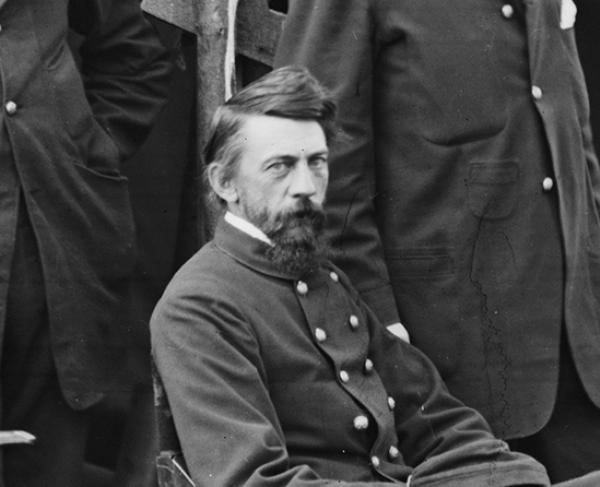Jonathan Letterman

Dr. Jonathan Letterman may not be as well known as General Ulysses S. Grant, but he played just as important a role in winning the Civil War for the Union. Known as the “Father of Modern Battlefield Medicine,” Letterman’s work saved thousands of soldiers from dying horrible deaths on the battlefield.
Letterman was born in Canonsburg, Pennsylvania on December 11, 1824. His father was a surgeon, and Letterman followed in his footsteps, graduating from Jefferson Medical College in 1849 and assuming the rank of assistant surgeon in the Army Medical Department that same year. From 1849 until 1861, Letterman served on various military campaigns against Native American tribes in Florida, Minnesota, New Mexico, and California.
With the beginning of the Civil War in 1861, Letterman was assigned to the Army of the Potomac and was eventually named medical director of the entire army in June 1862, with the rank of major. After it took over a week to remove the wounded from the battlefield at Second Manassas, Letterman was given free range by General George McClellan to do whatever was needed to revamp the poor medical services that the men received in the field.
Before Letterman’s innovations, wounded men were often left to fend for themselves. Unless carried off the field by a comrade, or one of the regimental musicians doubling as a stretcher bearer, a wounded soldier could lie for days suffering from exposure and thirst. Letterman started the very first Ambulance Corps, training men to act as stretcher bearers and operate wagons to pick up the wounded and bring them to field dressing stations. He also instituted the concept of triage for treatment of the casualties.
Letterman developed an evacuation system that consisted of three stations:
1) A Field Dressing Station - located on or next to the battlefield where medical personnel would apply the initial dressings and tourniquets to wounds.
2) A Field Hospital – located close to the battlefield, usually in homes or barns, where emergency surgery could be performed and additional treatment given.
3) A Large Hospital – Located away from the battlefield and providing facilities for the long term treatment of patients.
In addition to these improvements, Letterman arranged for an efficient distribution system for medical supplies.
The success of the Ambulance Corps was proven at the battle of Antietam on September 17, 1862. While there were over 23,000 casualties, medical personnel were able to remove all of the wounded from the field in just 24 hours. The battle of Fredericksburg, where the Union suffered an additional 12,000 casualties, and the battle of Gettysburg, with 14,000 Union wounded, both tested Letterman’s system to the extreme, but again, it proved a great success, saving thousands of soldiers’ lives. In March of 1864, the system was officially adopted for the U.S. Army by an Act of Congress.
With Letterman’s work with the Army Medical Corps completed, and after serving a brief period as Inspector of Hospitals, Letterman resigned from the army in December 1864. He moved to San Francisco where he served as coroner from 1867 to 1872, and published his memoirs, Medical Recollections of the Army of the Potomac.
In 1872, after the death of his wife, Letterman became severely depressed. Several illnesses followed and on March 15, he passed away. He was buried in Arlington National Cemetery where his gravestone honors the man “who brought order and efficiency in to the Medical Service and who was the originator of modern methods of medical organization in armies.”

